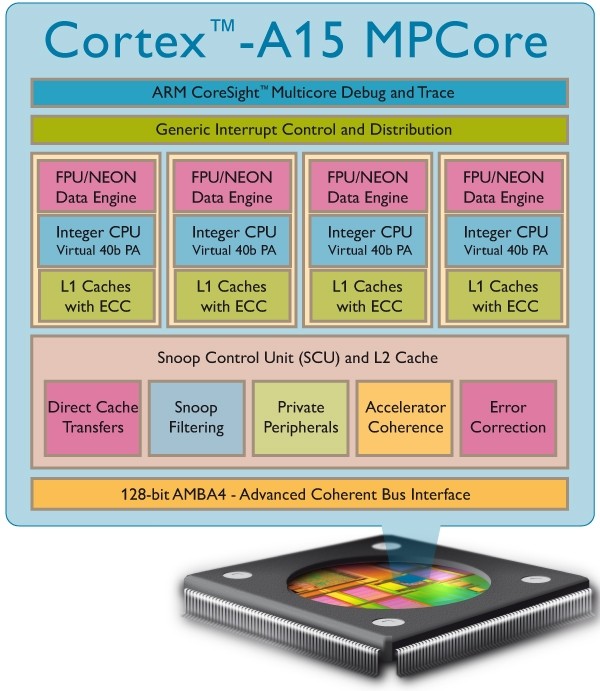ARM Holdings, the UK-based company whose chip designs power the majority of the smartphone and tablet products on the market, has announced on their official blog a new quad-core chip aimed directly at notebooks and network-based hardware.
The new ARM Cortex-A15 MPCore chip is a hard macro variant quad-core clocked at up to 2.0GHz, built using the TSMC 28-nanometer HPM process and offers similar power consumption ratings to their existing Cortex-A9 products. It also includes their NEON and Floating Point Unit technology, EEC for L1 and L2 RAM, as well as the ability to address more than 4GB of RAM and support for virtualization, which makes it suitable for a wide variety of applications.

What's unusual is that ARM has uniquely released it as a hard macro version, which the company says offers the best compromise between performance and power drain as well as allowing for it to hit the market much faster. Normally their chips can be tweaked to the customer's exact specifications, but ARM maintains this will ultimately increase the time it takes to reach store shelves.
"For SoC designers looking to make a trade-off between the flexibility offered by the traditional RTL-based SoC development strategy and a rapid time to market, with ensured, benchmarked power, performance and area, an ARM hard macro implementation is an ideal, cost-effective solution," said Jim Nicholas, ARM's vice president of processor division marketing. "This new Cortex-A15 hard macro is an important addition to our portfolio and will enable a wider array of partners to leverage the outstanding capabilities of the Cortex-A15 processor."
ARM believes the new chip will be ideal for powering notebooks and even more interestingly, thin but fast network-based hardware solutions. The set hardware parameters could potentially decrease the time it takes to see them arrive in new products, which could include smartphones as well as tablets.
There is no exact timeframe on availability yet, but previous announcements regarding ARM Cortex-A15 hardware suggest the new quad-core chip should reach products shipping later this year, or early 2013. More information is expected to follow at the IEEE symposium in Japan later today.